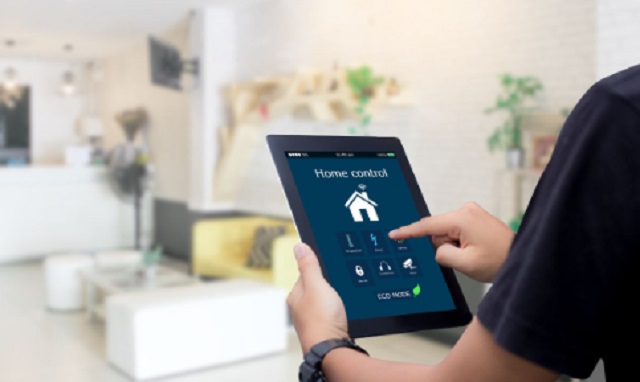Also Interesting
The Future of Fault Detection: AI and IoT Innovations in Garage Door Repair

AI and IoT are making big changes to how we fix garage doors. They help find problems faster and better. With AI, we can watch garage doors all the time. IoT lets us see if something is wrong right away. This makes fixing garage doors easier. It also makes customers happier because their problems get solved quickly.
Sometimes, garage doors stop working out of the blue. People don’t know why. But the Predictive Maintenance Market is helping. This market is getting bigger and bigger. By 2029, it could be worth $47.8 billion! This growth is thanks to new IoT tech and ways to understand data. As this market grows, using AI and IoT for garage door repairs gets better. We can find issues before they become big problems. This lets us fix things ahead of time.
This article talks about how AI and IoT change garage door fixes. These new ways help find and fix problems fast. With AI and IoT, garage door repair get simpler and easier. Homeowners can get their garage door issues solved quickly with these
new ways.
AI Spots Garage Door Faults
Artificial intelligence makes it simpler to find issues with garage doors. The systems work all the time, day and night. They look at information constantly to catch problems early. This prevents bigger issues from happening later. Catching
problems early keeps garage doors working well for longer; it also reduces the chance of sudden breakdowns.
Sophisticated learning models drive these smart systems. Over time, the models study lots of data. They learn to recognize patterns that point to future issues. As they take in more information, they get better at spotting potential problems. This
leads to less downtime for repairs. It also helps garage doors run smoothly. With intelligent technology, homeowners feel secure. They know their garage doors are being watched carefully.
IoT for Real-Time Garage Door Monitoring
Moving beyond smart fault finding, IoT monitors garage doors closely. Cameras and motion sensors make this work. These gadgets send alerts to your phone if something odd happens. You stay informed, home or not.
Smart home tech lets you check your garage door anytime. You can see if it’s open or shut and control it remotely. This adds security by enabling quick action if needed. With IoT monitoring your garage door, you can relax knowing all is secure.
Breakthroughs in Fault Detection Technologies
New advances change how we spot garage door issues. Smart sensors and constant IoT tracking enable smarter repairs.
New Sensors Help Fix Garage Doors
Special sensors use computer programs to find issues with garage doors before they become big problems. With these sensors, your garage door can understand how it is working right now. This smart technology makes fixing problems easier.
The sensors also prepare for future issues by looking at data over time. They learn from patterns and predict when a part might break down. This helps avoid unexpected breakdowns, making maintenance easier and saving money in the long run. These sensors bring a new level of accuracy, changing how we take care of our garage doors.
Watching Devices All the Time
Smart gadgets have changed many businesses, like garage door fixing. These gadgets can track how products work and use energy. When gadgets connect to products, they can see how they work and use energy in real-time. This gives useful data to make things better and fix them.
Smart gadgets can quickly spot when things aren’t working right. They can find problems fast so there’s less downtime. Bigger issues are less likely too. By looking at data and tracking where things are, smart gadgets make it easy to manage info from different gadgets. This makes it a way better to find faults and fix things. Problems get found and fixed quickly. In the end, fixing costs less and things work better.

The Benefits of Using AI and IoT for Garage Door Services
New ways to find problems with garage doors are changing how we fix them. Smart sensors and tracking can now watch garage doors all the time. This helps find issues before they get worse. These systems use data and computer programs to
look for patterns. They can see if a garage door is having problems and needs repairs. Finding problems early means unexpected breakdowns are less likely. It also helps plan when a garage door needs maintenance, so it can stay working
smoothly.
Finding Problems Quickly and Accurately
AI and IoT help find problems with garage doors quickly and accurately. AI systems use data from sensors to find errors or potential issues fast. This means garage doors get fixed sooner, often before they break down. Smart technology makes
finding problems accurate and efficient, instead of guessing.
IoT devices monitor garage doors in real-time, so any issue is noticed right away. This automation improves how well systems work by allowing for predictive maintenance through intelligent diagnosis.
Saving Money on Maintenance
Using AI and IoT tools can help reduce costly repairs for garage doors. These tools can find issues before they get worse. This can cut down on unexpected costs and make garage doors last longer. Instead of fixing issues after they happen, this
approach finds and fixes them early on. This helps garage doors work better for longer.
IoT sensors and data analysis help spot issues early. This allows repairs before bigger problems happen. AI and IoT tools make repairs faster, cheaper, and better. They also makes customers happier. Smart sensors let homeowners go longer
without surprise breakdowns. This saves money on emergency repairs.
Enhanced Safety and Security Features
Advanced sensors with AI can quickly detect issues with garage doors. This ensures the doors operate correctly without glitches or errors that could be unsafe. Smart automation creates an extra layer of security too. It makes unauthorized
entries much harder.
These smart solutions allow for better maintenance before problems arise. They can predict errors before they occur, greatly improving security capabilities. You can control and monitor your garage door remotely through a smartphone or other device.
This convenient remote access also enhances safety. You receive alerts about any potential issues right away, preventing serious problems.
Customer Convenience and Service Efficiency
Smart home tech helps garage doors work better for you. AI learns what you like. Then, it gives you ways to open and close your garage doors from anywhere using your phone or voice. You can get into your garage easier this way. Smart tech also
checks if your garage door needs fixing before it breaks. This saves you time and money. Special sensors see if things are in the door’s way so it won’t hit them.
People feel safer at home when the garage door won’t hurt anyone or anything. In conclusion, using smart sensors and technology for garage doors is helpful. Problems are found faster. Repairs happen sooner. This saves money by avoiding
big issues. It also provides safety. Sensors prevent accidents by stopping the door. As technology keeps improving, garage doors will get even smarter. They will work better and be safer. Homes will be more secure with these new innovations. The future looks promising for keeping garage doors in good shape.
Also Interesting
Endorphina Slots: High-Quality Games Now at Zoome Casino Canada

If you’re looking for a provider that blends striking visuals, solid math models, and engaging themes, Endorphina slots are a must-try. Now featured at Zoome casino, Endorphina is quickly becoming a favourite among Canadian players who enjoy well-balanced volatility and great return potential.
From classic fruit machines to themed adventures with expanding wilds, Endorphina in casino environments offers reliable entertainment and serious payout opportunities. But what makes these games stand out? Let’s break down the key features, winning potential, and why you should play Endorphina games at Zoome.
Who Is Endorphina?
Endorphina is a leading game provider based in Prague, with over a decade of experience in developing online slots for regulated markets. The company is known for its well-polished video slots that balance engaging storylines with player-friendly mechanics. Their catalogue includes over 100 titles, with new releases launched regularly.
In Canada, Endorphina slots are now widely accessible through Zoome casino, one of the country’s fastest-growing platforms with a large game library and crypto-friendly payments.
Popular Endorphina Slots You Can Try at Zoome
Once you complete your zoome casino login, head over to the Endorphina slots section to discover a curated list of titles. Here are some fan favourites:
1. Hell Hot 100
● RTP (Return to Player): 96.07%
● Volatility: Medium
● Max Win: 1,000x
● Type: Classic fruit slot with a hot twist
● Why Play: Simple gameplay, blazing fast spins, and high hit frequency
2. Chance Machine 100
● RTP: 96.00%
● Volatility: Low to Medium
● Max Win: 5,000x
● Features: Expanding wilds, stacked symbols
● Why Play: Perfect for casual players who want frequent wins
3. Book of Santa
● RTP: 96.00%
● Volatility: High
● Max Win: 5,500x
● Features: Free spins with expanding symbols
● Why Play: A seasonal slot that pays like a timeless classic
4. Tribe
● RTP: 96.00%
● Volatility: Medium to High
● Max Win: 3,000x
● Special Feature: Free spins with progressive multipliers
● Why Play: Visually beautiful with strong payout structure
All endorphina games are built with HTML5, ensuring smooth play on desktop and mobile without requiring downloads.
Are There Endorphina Free Slots?
Yes! Endorphina free slots are available for demo play directly on Zoome. This means Canadian players can try out their favourites before making a real-money commitment. Free versions include all the same features, visuals, and mechanics — great for getting familiar with a game’s volatility and bonus structure.
To access, simply log in or click the “Demo” button on any title from the Endorphina section on Zoome.
Zoome Casino Bonuses and Endorphina Integration
Zoome casino offers several bonuses that can be used specifically on Endorphina slots, including:
● Welcome bonuses with free spins on selected Endorphina titles
● Reload bonuses for returning players
● Cashbacks and weekend tournaments featuring endorphina slot themes
● Seasonal campaigns with exclusive zoome casino promo codes
New players should check for a potential zoome no deposit bonus, as it occasionally applies to Endorphina’s most popular games like Book of Santa or Hell Hot 100.
RTP, Win Rate & Performance Metrics
Endorphina designs its games with a balance of fairness and entertainment. Here’s a general breakdown:
Metric Range/Typical Value
RTP 96.00% – 96.07%
Average Hit Frequency ~1 in 4 spins
Max Exposure (Base Game) 1,000x to 5,500x
Bonus Trigger Frequency 1 in 120–150 spins (approx.)
Average Session Duration 15–25 mins (based on volatility)
These stats make Endorphina in casino environments appealing to both casual players and slot grinders who understand variance and bankroll management.
Play Anywhere, Anytime
Zoome supports mobile-first gameplay. Every endorphina slot loads seamlessly on iOS and Android without needing an app. With fast servers, secure encryption, and a clean layout, spinning is quick, intuitive, and glitch-free.
Whether you’re chasing a bonus round or enjoying a few free spins on your lunch break, Zoome makes the experience smooth and hassle-free.
Final Thoughts
With its mix of quality graphics, strong RTP, and easy bonus access, Endorphina slots are a solid choice for Canadian players. Whether you’re trying endorphina free slots in demo mode or diving into real-money play via zoome casino login, there’s a title to suit your style.
From well-known hits like Hell Hot 100 to sleeper favourites like Tribe, this provider continues to prove why Endorphina in casino settings is a winning combination. And with regular zoome casino promo code campaigns and potential zoome no deposit bonus access, it’s the perfect time to start spinning.
Ready to explore the full lineup? Visit Zoome and see what Endorphina has to offer — your next big win could be one spin away.
Also Interesting
Tips to build an income stream through betting

Financial freedom means different things to different people. Some seek to clear debt or reduce working hours. Others aim to build an income stream separate from traditional employment. Betting is often seen as entertainment, but some treat it as a potential method for financial gain.
It is not a simple route. Success in betting depends on skill, patience, and clear risk control. Casual bets and chasing losses are not the same as long-term planning. Play slots and live casino online deals may attract interest, but true gains require a well-developed approach grounded in calculation,
not luck.
Some treat betting as a serious income project. Like investing, it involves monitoring markets, sticking to rules, and managing emotion. These habits shape outcomes more than any single win or loss.
The Role of Strategy and Market Choice
Building consistent returns from betting starts with discipline. Most success stories come from people who specialize in specific markets. They avoid randomness and focus on repeatable patterns. This reduces risk and allows room for structured decisions.
For some, sports betting offers the best value. Others prefer slots, roulette, or blackjack. Success in each area depends on the ability to control the betting environment. Choosing fixed budgets, setting limits, and logging results all contribute to a more sustainable system.
In Ireland and the UK, platforms now offer a wider range of services. These include analytics tools, stat-based bets, and account dashboards. Markets like Slots and table games in Ireland are especially popular among users who combine short sessions with targeted goals.
Key traits of long-term betting approaches include:
● Specialising in specific games or sports.
● Avoiding emotional or rushed bets.
● Logging every session and reviewing performance.
● Staking only a fixed portion of the bankroll per event.
Psychological Factors and Risk Limits
Financial growth through betting requires mental control. Most losses in gambling happen when people act without a plan. Emotional decisions, such as doubling stakes after a loss, often lead to poor outcomes.
Structured bettors approach the activity with neutral judgement. They view each bet as part of a larger system, not an isolated moment. This approach reduces stress and protects capital. Understanding the limits of control also helps. For example, not every market behaves the same
way each week.
Many betting platforms now offer tools that assist with self-monitoring. These include loss caps, spending summaries, and trend reports. These systems support the user but cannot replace careful thinking. Understanding the connection between strategy risk and decision making can lead to
better choices, both short and long-term.
Economic Context and the Role of Discipline
The idea of using betting as a route to financial freedom often attracts attention during economic stress. Some people look for faster income options when prices rise or wages stagnate. However, betting is not a guaranteed path. It only works when treated as a skill-based discipline, not a
shortcut.
Those who see results often treat betting like a second job. They put in regular hours for research, review performance metrics, and stick to a strict process. This removes guesswork and replaces it with control.
Having multiple sources of income is one part of building financial freedom. Betting can be one of those if it is paired with discipline, patience, and analysis. It is not passive income. It requires consistent effort and awareness.
Sensible Goals and Sustainable Progress
Success with betting should not be measured in jackpots or sudden windfalls. Small, repeatable profits are more stable. The aim is to grow a bankroll slowly, avoid major losses, and learn from every result. This mindset supports steady progress and avoids burnout.
Financial freedom through betting is possible for some. However, it depends on the user, not the platform. Planning, structure, and clear risk boundaries matter more than the type of bet. For those who view betting as a long-term activity rather than a quick fix, it can play a role in building
independence.
As always, betting should be treated with care and clear intent. When combined with focus and habit, it can support a wider plan toward financial freedom. However, without those foundations, it is more likely to create setbacks than solutions.
-

 Alberta7 hours ago
Alberta7 hours agoAlberta Independence Seekers Take First Step: Citizen Initiative Application Approved, Notice of Initiative Petition Issued
-

 Crime6 hours ago
Crime6 hours agoNational Health Care Fraud Takedown Results in 324 Defendants Charged in Connection with Over $14.6 Billion in Alleged Fraud
-

 Health5 hours ago
Health5 hours agoRFK Jr. Unloads Disturbing Vaccine Secrets on Tucker—And Surprises Everyone on Trump
-

 Bruce Dowbiggin8 hours ago
Bruce Dowbiggin8 hours agoThe Game That Let Canadians Forgive The Liberals — Again
-

 Agriculture2 days ago
Agriculture2 days agoCanada’s supply management system is failing consumers
-

 Alberta1 day ago
Alberta1 day agoCOVID mandates protester in Canada released on bail after over 2 years in jail
-

 armed forces1 day ago
armed forces1 day agoCanada’s Military Can’t Be Fixed With Cash Alone
-

 Crime2 days ago
Crime2 days agoProject Sleeping Giant: Inside the Chinese Mercantile Machine Linking Beijing’s Underground Banks and the Sinaloa Cartel






